Back to Wood Floor Fitting
Engineered Wood Flooring Types: A Comprehensive Guide
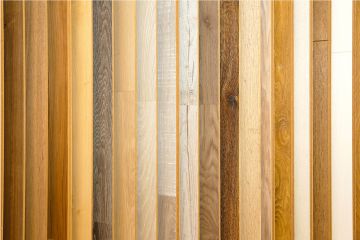
Engineered wood flooring is an excellent choice for a variety of residential and commercial properties. Increasingly, homeowners and businesses are opting for this advanced type of real wood flooring for a multitude of reasons. Its high-quality, durable, and beautiful attributes stem from its innovative structure.
Despite common misconceptions, engineered wood should not be confused with laminate flooring. Unlike laminate, which is made from synthetic materials, engineered wood is crafted entirely from natural wood materials. It is classified as real wood flooring, just like solid wood and parquet floors.
The structure of engineered wood flooring is distinctive. It consists of layers of plywood, softwood, or other wooden materials that are glued together in a crisscross pattern. This unique design forms the core of each engineered wood floorboard, which is then topped with a thick layer of hardwood. The hardwood layer can be sourced from a variety of wood species, similar to those used in solid wood flooring.
The primary purpose of this advanced design is to enhance the floor's resistance to moisture, humidity, and temperature fluctuations. Unlike solid wood flooring, engineered wood can be installed in areas with higher moisture content, such as kitchens, bathrooms, basements, and conservatories. With engineered wood flooring, you can eliminate concerns related to moisture damage, as its unique core allows for greater flexibility, structural integrity, and stability. This ensures that the floor can withstand various conditions and last for decades.
Benefits of Engineered Wood Flooring
Engineered wood flooring boasts a long list of benefits compared to many other flooring options available on the market:
- Classic Beauty: Retains the timeless elegance of hardwood flooring.
- Improved Durability: Designed to withstand wear and tear.
- Stability: Less prone to warping and damage from moisture.
- Versatility: Suitable for a wide range of environments and applications.
If you are considering investing in engineered wood flooring for your next building or home improvement project, it’s essential to understand the different types available. Learning about the various options will help you determine which type best suits your needs and project requirements.
Engineered Wood Categories by Grades
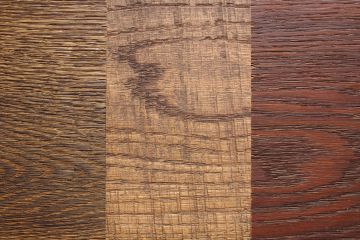
Wood flooring grades are classified into four different categories, which determine the appearance of the floorboards based on the presence, amount, and size of natural features such as knots, swirls, and sap. It's important to note that the grade of a wooden floorboard does not correlate with its quality or durability - rather, it reflects its natural appearance and pattern, influenced by factors like the part of the tree from which the boards are cut and the wood species.
Choosing the appropriate grade is largely a matter of personal taste and preferences. The four grade categories applied to engineered wood, as well as solid wood floors, are:
-
Prime: This category includes engineered wood floors with the least amount of sap, knots, and natural patterns. Prime-grade floorboards typically have a simple and clean appearance.
-
Select: Slightly less uniform than prime, select-grade wood offers a balance between a clean look and a hint of natural character.
-
Natural: Natural-grade engineered wood displays more visible features like knots and variations, giving it a more authentic and organic look.
-
Rustic: At the opposite end of the spectrum, rustic-grade floorboards feature a distinctive and unique appearance with rich natural patterns. These boards add significant character and make a bold statement in any room.
The grade of engineered wood flooring you choose should reflect your interior design vision and meet your personal preferences and requirements.
Engineered Wood Categories by Thickness
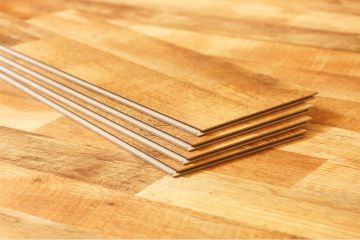
Engineered wood floorboards vary significantly in thickness, which primarily refers to the thickness of the top layer of hardwood known as the lamella. The thicker this top layer is, the stronger and more durable the floorboard becomes, allowing for more sanding over time. However, it's important to note that thicker engineered wood floorboards generally come with a higher price tag.
The thickness of engineered wood floorboards typically ranges from 14/3 mm to 20/6 mm, where:
- 14 mm represents the total thickness of the board,
- 3 mm represents the thickness of the lamella layer.
Similarly, for the 20 mm thickness:
- 20 mm is the total thickness,
- 6 mm is the thickness of the lamella.
When selecting the thickness of your floorboards, it’s essential to consider the specific needs of your project, especially if you plan to install an underfloor heating system. Keep in mind that higher thickness isn't always the best choice; some installations may require thinner engineered wood floorboards based on unique project specifications.
Engineered Wood Categories by Width
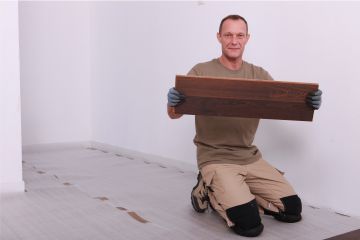
Similar to solid wood flooring, engineered wood floorboards come in a variety of widths. You can choose from narrow, wide, and broad engineered wood floorboards, and your selection will largely depend on your taste, the interior design, and the atmosphere you wish to create.
Considerations for Width Selection
- Wider Boards:
- Can create a sense of spaciousness in larger rooms.
- Help in achieving a modern or contemporary look.
- Narrow Boards:
- May be more suitable for smaller or narrow spaces, preventing the area from feeling cramped.
- Often contribute to a traditional or rustic aesthetic.
Keep in mind that installing wide-engineered wood floorboards in very small or narrow areas can make the space appear even smaller. It’s essential to consider the specifics of your room when selecting the width of your floorboards.
To ensure the best choice for your project, consider consulting with an interior design specialist or a wood flooring expert.
Engineered Wood Categories by Installation Method
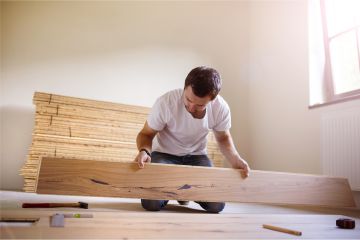
Engineered wood flooring offers a variety of installation methods, providing flexibility and convenience to suit different projects. You can choose from the following installation techniques:
1. Glue Down or Nail Down Installation
- This traditional method involves gluing or nailing the engineered wood floorboards directly to the subfloor or an underlayment layer.
- Ideal for creating a secure and stable flooring surface.
2. Floating Installation
- This method allows for easy installation without the need for nails, screws, or adhesive.
- Floating floors can be laid over problematic subfloors that may not be perfectly dry or level.
- Suitable for installations over underfloor heating systems, providing more versatility in various environments.
It is essential to consult with a wood floor installation specialist to determine the best installation method for your project, considering the specific characteristics of your space.
Need Help Choosing the Right Engineered Wood Flooring?
With so many styles, constructions, and finishes available, selecting the perfect engineered wood floor can be overwhelming. Let our experts guide you. Book a free site visit or get in touch for personalised recommendations and professional installation support.